THE HINDU – CURRENT NOTE 06 February
 Committed to ending triple talaq: Prasad
Committed to ending triple talaq: Prasad
The Centre is likely to take “a major step” to ban triple talaq after the ongoing Assembly polls insisting that the issue is not related to religion but involves respect and dignity of women.
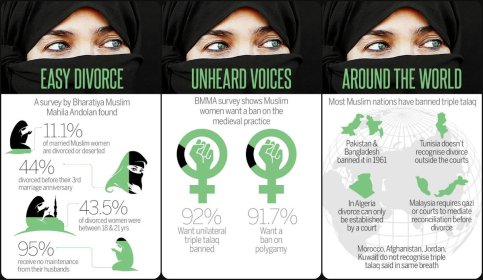
‘Evil social practice’
- The tradition of triple talaq denies respect to women as every pernicious practice cannot be part of a religionand the central government was committed to ending the evil social practice.
- Centre would raise the issue in the Supreme Court on three points — justice, equality and dignity of women.
- SP-Congress-BSP yet to clarify their stand on the issue of triple talaq.
 Aadhaar linkage to school subsidy schemes worries HRD Ministry
Aadhaar linkage to school subsidy schemes worries HRD Ministry
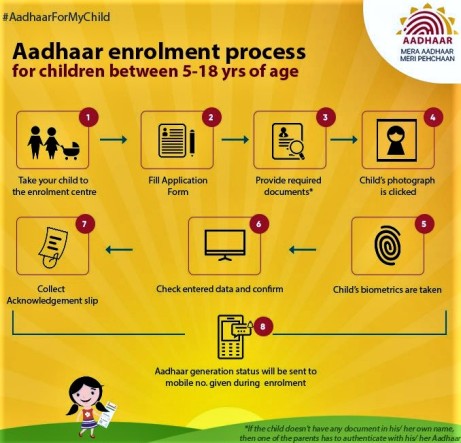
- The Human Resource Development (HRD) Ministry has expressed concern over the Centre’s push to link the Aadhaar number with subsidy schemes related to school education.
- Department of School Education and Literacy (DSEL), under the HRD Ministry, said the decision to use the Aadhaar number as an identification document for receiving benefits under various school-related schemes needs more deliberation.
- In November, Cabinet Secretariat issued directive asking all the Ministries to issue notification under Section 7 of the Aadhaar Act, 2016, which makes the use of Aadhaar “an identifier for delivery of various subsidies or benefits or schemes” to beneficiaries.
- The proposed notification to link two Centrally sponsored student scholarship schemes — to promote enrolment of girl child and economically weaker sections in schools — with Aadhaar has been put on hold after the Supreme Court stayed the mandatory use of Aadhaar in one of the scholarship schemes of West Bengal in September.
- The Cabinet Secretariat asked the Unique Identification Authority of India to “expedite and take the opinion of the Attorney General in respect of notifications to be issued for [two] scholarship schemes at the earliest.
- The Centre has identified 31 schemes where the Aadhaar number can be used as identification for providing various benefits. Some of the identified schemes include direct cash transfer of food subsidy under the National Food Security Act, supplementary nutrition to children below six and pregnant mothers, alongwith monthly honorarium for anganwadi workers under the Integrated Child Development Services, and subsidy on housing loans under the Pradhan Mantri Awas Yojana (Grameen).
- The Ministries would either ask all beneficiaries to furnish Aadhaar details for receiving benefits under Central government schemes or would help them get enrolled under Aadhaar.
 Visa holders hope to enter U.S.
Visa holders hope to enter U.S.

- The U.S. federal appeals court in San Francisco rejected Mr. Trump’s effort to immediately reinstate the ban early on Sunday brings hope to the Visa holders from seven majority-Muslim countries who were turned away from the United States due to President Donald Trump’s travel ban.
- The Justice Department had made the request with the Ninth Circuit Court of Appeals in San Francisco as part of an appeal against a lower court order halting the travel ban on people from Iraq, Iran, Syria, Sudan, Somalia, Libya and Yemen.
- The Arab American Civil Rights League sued in federal court in Detroit, challenging Mr. Trump’s executive order as unconstitutional. Appellants request for an immediate administrative stay pending full consideration of the emergency motion for a stay pending appeal is denied.
- The court asked for both sides to file legal briefs before it makes its final decision, after a federal judge halted the programme on Friday. It asked challengers of the ban to respond to the appeal, and for the Justice Department to file a counter-response by Monday.
 ‘Noida is a den for cyber criminals’
‘Noida is a den for cyber criminals’

- Cities like Noida were dens for cyber criminals. People do most transactions online. Post-demonetisation, the number of online payments has spiked. Online transactions make life easy, but the risk factor is high.
- Instances of ATM card PINs being leaked was also on the rise due to more than one person being present inside a kiosk.
Post-demonetisation rise in cyber crimes:
- In comparison to the earlier average, there has been an increase in the number of complaints of online fraud received after November 8. In January 2016, as many as 23 cyber crime cases were reported from NOIDA which rises up to 46 in January 2017.
- 25 cyber security complaints since November 8 last year has been registered, besides eight complaints related to fraudulent withdrawals from ATMs. This is in contrast to a total of 85 complaints filed in 2015 and 60 complaints filed between January 1 and November 8, 2016.
Focus on special training:
- Police now focusing on special training on cyber crimes. Efforts are on to equip Cyber Cell with more advanced equipment.
 Delhi, Dhaka push Ganga basin project
Delhi, Dhaka push Ganga basin project

- Bangladesh and India have held talks on the Ganga basin development project conceived in 2011, after dialogue on the Teesta water-sharing agreement slowed down.
- Talks on the Teesta river-sharing has been stalled because of differences between West Bengal Chief Minister Mamata Banerjee and Prime Minister Narendra Modi.
- “Ganga basin development project will help agriculture and river navigation and revive the river economy,” said a source close to the ongoing discussions.
- Joint dredging and development activities in the basin area are also part of the project.
- “The main component of the Ganga basin development is the issue of joint development and management.
- That apart, Bangladesh needs a new Ganga barrage to hold water released from the Farakka barrage,” said Mr. Zamir. The barrage will provide a solution to aridity in the Bangladeshi territory that Dhaka blames on the Farakka barrage.
- Once completed, the Ganga barrage can hold water for the lower riparian system in the lean season.
 Avalanche warning for Kashmir, Himachal
Avalanche warning for Kashmir, Himachal

- A medium danger avalanche warning was again issued on Sunday for some avalanche-prone slopes of Jammu and Kashmir and Himachal Pradesh.
- Snow and Avalanche Study Establishment (SASE) issued the warning that would be valid for the next 24 hours starting at 5 pm. As per advisory a “medium danger” warning is in place for avalanche-prone slopes in Kupwara, Bandipora, Anantnag, Baramulla, Ganderbal, Kulgam, Budgam, Poonch, Doda, Kishtwar and Kargil districts of Jammu and Kashmir.
- Medium danger avalanche warning for the same period has also been issued for avalanche-prone slopes in Kullu, Chamba, Lahaul and Spiti, Mandi, Kangra, Sirmour, Shimla and Kinnaur districts of Himachal Pradesh.
- People are advised not to move in avalanche-prone areas and further they are also advised to keep clearing the snow deposition from rooftop of their houses/bunkers to avoid damages.
Temperature rises:
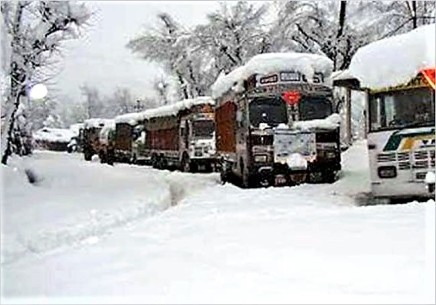
- The minimum temperatures rose sharply across Punjab and Haryana, where a few places received light to moderate rainfall.
- Chandigarh recorded a minimum temperature of 16.6 degrees Celsius. Ambala in Haryana registered a sharp increase in its minimum temperature, which settled at 15.3 deg C.
- The Srinagar-Jammu National Highway remained closed for traffic for the third consecutive day on Sunday following landslides at some places, even more wet weather has been forecast over the next 24 hours.
- The higher reaches of Kashmir received fresh snowfall overnight with the plains witnessing a mix of rains and snow. The higher reaches in Kullu, Lahaul-Spiti, Chamba and Kangra also experienced a mild to moderate snowfall and the downstream areas were hit by a wind storm and rain showers, partially affecting the normal life.
 In ISRO’s launch of 104 satellites next week, 88 will be from U.S.
In ISRO’s launch of 104 satellites next week, 88 will be from U.S.

- The Indian Space Research Organisation (ISRO) is on the cusp of making history when it sends 104 satellites into orbit on its PSLV-C37 rocket on February 15. Only three of them are Indian satellites.
- No space agency has launched such a large number of satellites in a single flight so far. (While ISRO’s PSLV launched 20 satellites last year, Russia’s Dnepr launcher holds the record for lifting 37 satellites to orbit in June 2014.)
- The PSLV will carry a main remote-sensing satellite in the Cartosat-2 series and two small spacecraft, all for ISRO, and 101 small foreign commercial satellites.
About Cubesats:

- In ISRO’s first mission of 2017, a single U.S. Earth imaging company, Planet, has made an eye-popping bulk booking for 88 of its small ‘cubesats’. Planet, an earth observation company formed in 2010 by former NASA scientists, has chosen ISRO’s PSLV launch for the second time. It got its earlier set of 12 ‘Doves’ launched in June last year.
- The 88 cubesats are part of Planet’s earth observation constellation of 100 satellites. They weigh around 5 kg each and are called ‘Doves’ or Flock 3p. For California-based Planet, too, it will be the record largest number of cubesats to be flown in a single launch, according to one of its executives.
- The 88 Doves would be released in sets of four cubesats.they are collectively known as Flock 3p.
Cartosat-2 & INS-1:
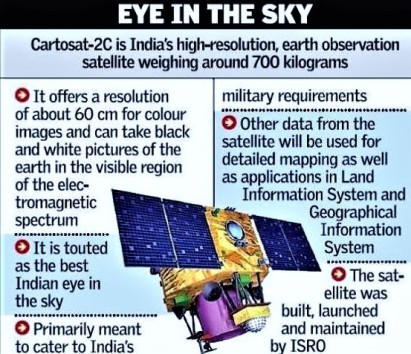
- PSLV-C37 will carry 4th satellite in the Cartosat-2 series, a very high resolution Earth observation satellite of about 650 kg, and occupies roughly half the space in the launch vehicle.
- It will carry two more Indian nano satellites, INS-1A and INS-1B, each weighing about 10 kg. They have a short lifespan of six to 12 months.
- The other satellites are cubesats or small specialised satellites of customers from Israel, the UAE, Kazakhstan, the Netherlands, Belgium and Germany. They will be released separately into their orbits at around 500 km from Earth.
- All the payloads will totally weigh around 1,500 kg. Since September 2015, the PSLV has launched 18 small U.S. earth imaging satellites in a total of 79 foreign spacecraft — which earns it some revenue and an increasing global market share.
Biggest launch:
- This is the 15th time Planet is launching Dove satellites; and it will be our biggest launch to date. Combined with the 12 satellites of Flock 2p operating in a similar orbit, this launch will enable Planet’s 100-satellite ‘line scanner’ constellation of Doves.
- The Planet series comes even as COMSTAC, (Commercial Space Transportation Advisory Committee under the U.S. FAA) is considering if U.S. satellites can be sent to space on Indian launchers.
 Targeting old scourges
Targeting old scourges
The the Union Budget set new elimination targets for some major communicable diseases burden carried by millions in India with tuberculosis, kala-azar (leishmaniasis), filariasis, leprosy and measles.
Tuberculosis:
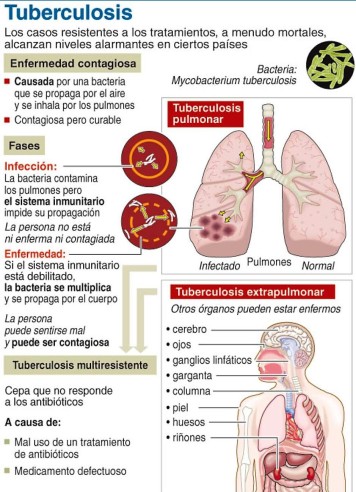
- The centers promise of a well-funded five-year scheme to meet the TB challenge beginning in 2017, although steady progress towards the new elimination deadline of 2025 will also depend on improved capabilities in the health system to meet the daily drugs requirement and a feeling of ownership at the State level.
- Last year India has a higher burden of new patients with TB than estimated earlier — 2.8 million in 2015 compared to 2.2 million in the previous year, a quarter of the world’s cases.
- The World Health Organisation has been pointing to the lack of integration of private practitioners with the national mission on tuberculosis for guaranteed access to drugs, and lack of continuous monitoring of such patients.
Laprosy:
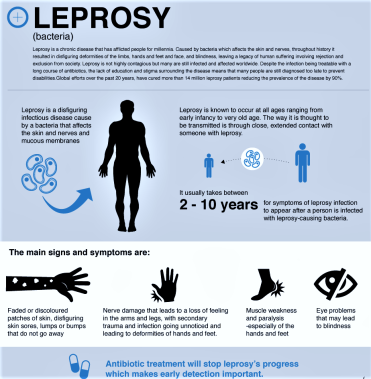
- India’s campaign on leprosy is a ‘post-elimination’ struggle resulting from complacency, since it announced at the end of 2005, based on a rate of less than one person in 10,000 having it. Such self-congratulatory moments weakened both policy focus and funding in some pockets in eastern India, where it exceeded the accepted prevalence rate.
- There were 1,02,178 leprosy cases on record as of September 2016, and districts of ‘high endemism’.
Kala-azar:

- Kala-azar, though underreported and mainly confined to Bihar and Jharkhand, is a promising candidate for elimination in the current year, since the few thousand cases are caused by a protozoal parasite with no animal reservoir; control of the vector, the sand fly, holds the key.
- Detecting new cases early and preventing them from progressing to disability-inducing grade two level is crucial, although complete removal by 2018 as envisaged in the Budget may prove difficult. Rehabilitation of patients is also a weak spot.
- If good medical protocol is pursued, pockets of filariasis in many States can be removed. Rehabilitation programmes for these diseases require more resources and policy support.
 Will Budget help double farmers’ income?
Will Budget help double farmers’ income?
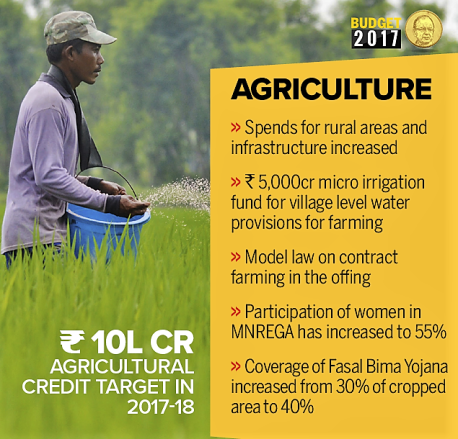
- Finance Minister Arun Jaitley announced a slew of measures in the Union Budget 2017 to boost the agriculture sector.
- Higher agricultural credit, higher allocation for irrigation projects, a crop insurance scheme and increased allocations for MGNREGA to dig farm ponds were among the measures announced on February 1.
- Agriculture will have to grow at 12 or 14% to realise such rise in earnings. At present, the growth rates stand at a poor 1.2%, according to World Bank data.
Farmers’ Income and Loans:
- The average monthly income of the Indian farm household was estimated to be about ? 6,426 by the Situation Assessment Survey of Agricultural Households in its NSS 70th round.
- This included net receipts from cultivation, farming of animals, non-farm business and income from wages.
- The average monthly consumption expenditure per agricultural household was Rs. 6223.
- For cultivation related expenses, the farmer is mostly dependent on loans and the NSSO survey revealed that half of the farm households were neck-deep in debt.
- The agricultural credit is mostly netted by large companies. Also nearly 50% of farmers are women, who often do not benefit from credit policies as they do have land titles in their name.
- Unless land titling recognises female ownership of land for cultivation, half of India’s farmers cannot claim institutional credit.
Commudity Pricing:
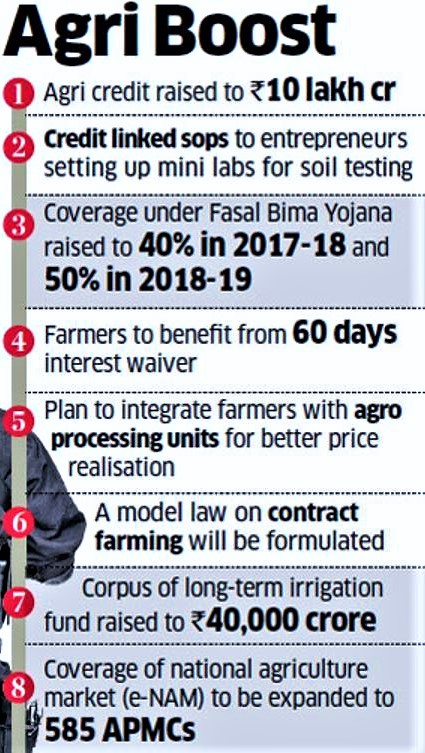
- For any real increase in income, farmers require higher returns for their produce.
- In a statement issued on the Budget, Professor M. S. Swaminathan, founder of the M.S. Swaminathan Research Foundation noted that it was high time that the recommendations of the National Commission on Farmers – to provide the minimum price of the total cost of production plus 50% – are implemented.
- The agriculture expert said that in the case of rubber, for instance, a price stabilisation fund was established which helped farmers get better prices for their produce.
- He suggested that similar measures be introduced for other farm produce as well.
- The problem of economic viability of farming is one of rising input prices such as for fertilisers, pesticides and seeds and stagnating output prices as MSP is not rising.
- Further, protectionist barriers for Indian farmers are much lower now and there is little increase in expenditure for agriculture.
Drought-proofing farming
- Tackling climate change and its potential impact also requires a budget to safeguard farmers.
- Given the drought and errant rainfall affecting farmers, the government’s step to create five lakh more farm ponds that will work as a drought-proofing measure in gram panchayats is welcome, but everything depends on how well the schemes are executed on the ground.
- While the crop insurance scheme aims to rightly protect farmers from the vagaries of the weather, allocations for which have been increased in the 2017 Budget, the terms of the Pradhan Mantri Krishi Bima Yojana spell out that the amount of insurance cover depends on the premium paid and extent of cover, so a farmer may not necessarily recover all losses sustained from crop damage in case of an eventuality.
